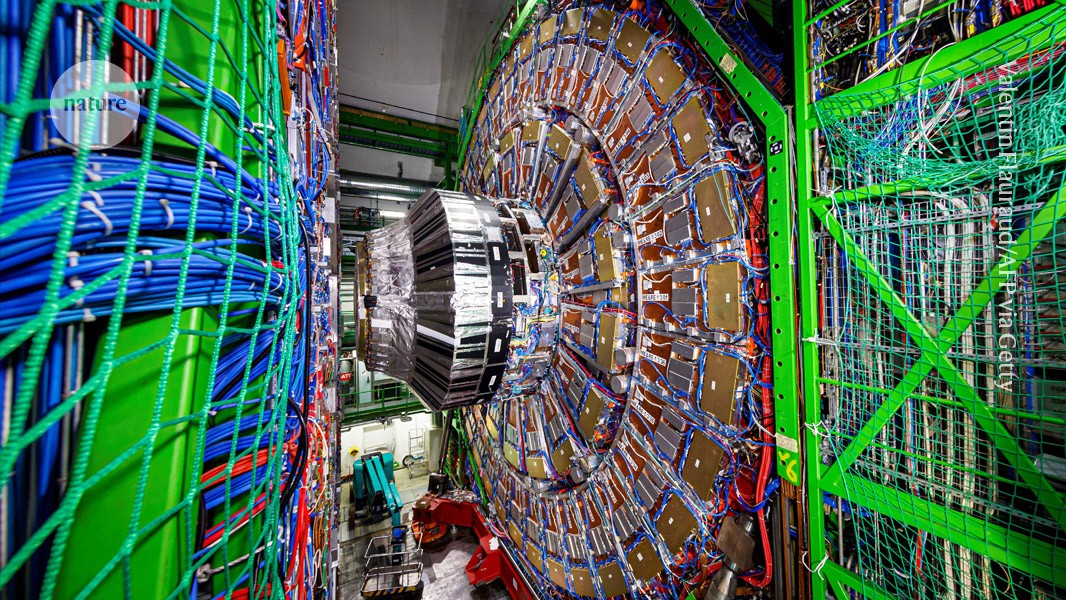Pioneering CERN scheme will pay publishers more if they hit open-science targets

The particle-physics funder will provide financial incentives to encourage practices such as data sharing and transparent peer review

The Compact Muon Solenoid (CMS) detector at CERN, which has announced a scheme to incentivize open science policies in publishing.Credit: Valentin Flauraud/AFP via Getty
Leaders at CERN, Europe’s particle-physics laboratory in Geneva, Switzerland, will introduce financial incentives for academic publishers to adopt open science policies as part of the organization’s collective agreement with 11 particle-physics journals.
The current scheme sees those journals publish work from the field openly and at no cost to authors, in exchange for bulk payments. Under the newly launched initiative, CERN will pay more to publishers that adopt polices such as use of public or open peer review and linking research to data sets, and less to those that do not.
Some open-science specialists say the policy could be a game-changer in encouraging transparent science. Others caution that it could set a precedent for publishers to boost their fees in exchange for becoming more open.
“Particle physics is large, international, highly complex, highly dynamic. Openness is the only really effective way of practising science in the discipline,” says Kamran Naim, head of open science at CERN.
Open-access fund
The move comes as a result of CERN's success in encouraging journals that publish its work to do so more openly, through a programme called the Sponsoring Consortium for Open Access Publishing in Particle Physics (SCOAP3).
SCOAP3 launched in 2014 and its members include 3,000 libraries, research funders and research organizations worldwide, all of which contribute to a common fund at CERN. This is used to pay annual or quarterly lump sums to journals, in amounts depending on how many papers they publish. The initiative has so far supported the publication of more than 70,000 open-access articles. It has an annual budget of around €10 million (US$10.4 million).
Under the next phase of the programme, known as the Open Science Mechanism, CERN will score the journals’ publishers on how well they adopt open-science practices, according to a points system developed by the consortium. Publishers will be able to earn points for, among other things, making their content accessible for people with disabilities, linking research to the relevant software and disclosing data on the diversity of authors.
Those with a high score will receive payments up to 15% higher than originally agreed, whereas those that score poorly could get as much as 10% less, says Naim, who is operations manager of SCOAP3. The system is not designed to be punitive, but to help incentivize publishers, he adds. “This is where our community is placing its values, and we want to put our money where our mouths are.”
Naim says that SCOAP3’s budget will increase by 9% over the next three years to cover the cost of the changes. He expects the process of scoring the seven publishers currently involved in the agreement to be complete by early April. These include industry giants Elsevier and Springer Nature, which publishes Nature, as well as smaller society publishers such as the American Physical Society (Nature’s news team is editorially independent of its publisher).
Enjoying our latest content?
Login or create an account to continue
- Access the most recent journalism from Nature's award-winning team
- Explore the latest features & opinion covering groundbreaking research
or
Sign in or create an accountdoi: https://doi.org/10.1038/d41586-025-00183-3
This story originally appeared on: Nature - Author:Holly Else


















